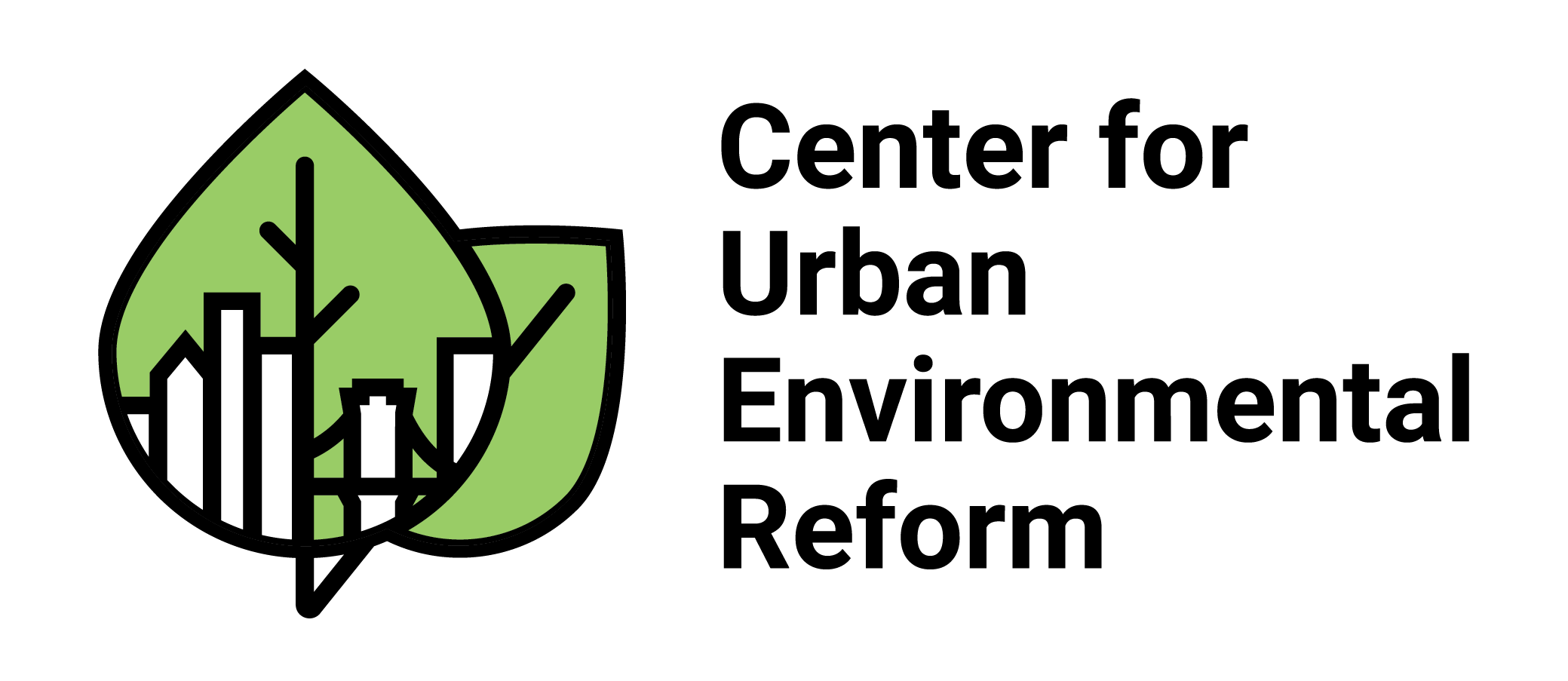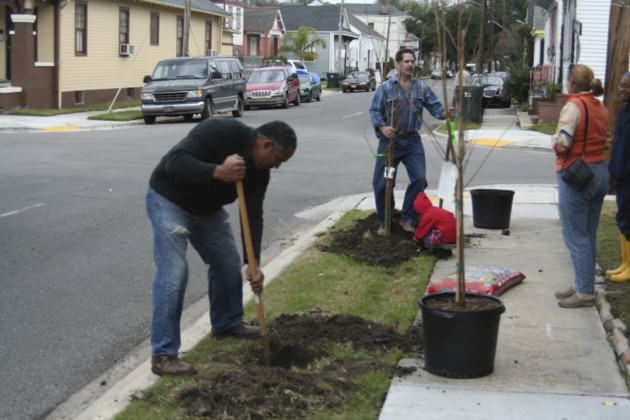Urban Sustainability: EJ, Stewardship and Greening in the Red Zone
Last Wednesday CUER jointly hosted a Research Seminar on Urban Sustainability with the U.S. Forest Service and the NYC Urban Field Station at CUNY School of Law. Keith Tidball, Ph.D., of Cornell University’s Civic Ecology Lab, and Erika Svendsen, Ph.D., of the U.S. Forest Service’s NYC Urban Field Station, spoke on separate yet related topics within the theme of urban sustainability.
Dr. Tidball’s presentation was a focus on his concept of Greening in the Red Zone. This idea focuses on bringing the individual, societal and ecological benefits of community-based environmentally sustainable practices to disaster preparedness, relief and mitigation. His presentation at CUNY was more specifically about his studies in post-Hurricane Katrina New Orleans. As part of the rebuilding process, people from neighborhoods with traditionally differing demographics were coming together to plant trees and literally green the red zone. Dr. Tidball discussed FEMA and a lack of funding for projects like greening the damaged urban landscape. The discussion then progressed to ways in which people look to trees and nature as symbols of life, or biophilia, as ways of moving through difficult times of death and destruction. Not long after, the love of life helps create a sense of, or love of, the place of living (topophilia), which assists with redevelopment and care for urbanscapes. Over time, the natural cycle is that people start to exploit the available resources as topophilia changes, and then conservation movements start. The cycle might repeat itself.
Dr. Svendsen discussed the evolution of urban stewardship groups, with a focus on her experiences in Baltimore and NYC. After reviewing a brief history of modern NYC stewardship groups, Dr. Svendsen detailed how these groups have grown less content with merely doing neighborhood “cleanups” and plantings, and have now moved into more of a “hands-on” civic steward role. The history of these groups was telling as to their current roles. In the 1970s, when NYC was broke and a symbol of a failed city, these groups first appeared to take over roles that were previously left to the government that could no longer handle them. As the City improved and retained money, in the 1990s groups would push back and politically challenge the City, establishing urban gardens on empty lots. Now, in the 2000s, the groups have increasingly worked collaboratively with the City government, and public-private relationships have popped up in almost every neighborhood. Many groups are now involved with formal rulemaking, technical expertise, fiscal management and urban design.
While these presentations primarily stayed within the parameters set by their respective speakers, I thought that law and environmental justice were pervasive in both. Administrative and property law are at play underneath the actions Drs. Tidball and Svendsen described. Sometimes the law facilitates, sometimes it slows down and sometimes it turns a blind eye. According to Dr. Tidball, for example, FEMA now reserves money for post-disaster greening projects — at least in New Orleans. The establishment of community gardens on unused city plots is an example of a good use of property with an authority figure looking the other way. Public-private partnerships, on the other hand, are tools for facilitation of the goals of urban stewardship groups. Mayor Bloomberg’s Million Trees NYC and other PlaNYC initiatives come to mind.
Moreover, environmental justice exists in what both Dr. Tidball and Dr. Svendsen were saying. Urban stewardship groups sprung up to handle environmental, health and urban issues that government failed to properly deliver. As the groups these days get more involved with rulemaking, technical expertise and urban design, neighborhoods become increasingly poised to deal with challenges presented by environmental and social injustice — especially those that have existed because of the former uses of surrounding lands, or from historically unequal burdens (economically, environmentally, etc.). Dr. Tidball focused on post-Katrina New Orleans, but the blog inspired by his original Greening in the Red Zone work (to which he seems to be a frequent poster) gives examples of how urban blight is a type of a red zone. Dr. Svendsen talked about how in NYC some of the most interactive and outspoken stewardship groups are in areas like the Brooklyn-Queens border and in The Bronx — areas that are developing residentially; formerly industrial; and that have historically had heavy environmental and health burdens.[1] These neighborhoods that are more heavily burden and environmental justice areas seem to fit within Dr. Tidball’s example of Red Zone. It is interesting and important to see the variety of fields that must interact to address urban and environmental justice problems.
[1] On the other hand, well-greened and older, less industrially-impacted neighborhoods like Sunnyside/Sunnyside Gardens in Queens have stewardship groups that are more active within their own neighborhoods. Dr. Svendsen specifically mentioned Sunnyside as less interactive; some friends at TreeKit confirmed its high level of trees.


